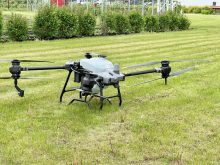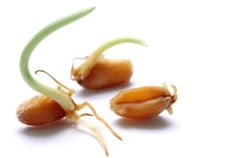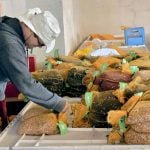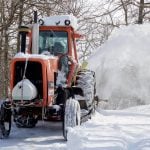VICTORIA – Alarmed at honeybee colony losses that reached 80 to 100 percent last spring on Vancouver Island, a Victoria farmer is buzzing over a new program she says will boost native bee populations.
Nathalie Chambers, agricultural program assistant with the Pollinator Enhancement Program, said the province-wide plan aims to improve conditions for native bees so that farmers are not as dependent on the honeybee, the dominant pollinator in the province.
The program was launched by the Land Conservancy, an organization based in Victoria.
“We need to restore the health and habitat of native bees,” said Chambers, who farms the 27 acre Madrona Farm with husband David.
Read Also

More factors affecting winter weather
When you combine a weak La Niña, early Siberian snow, and a warm northern Pacific, it’s easy to see why long-range winter forecasting is so complex.
“This work is very, very important in terms of agriculture. Native bees are tailor-made for pollination.”
Species like the bumblebee are at least five times more efficient at pollinating than honeybees because they disengage their wings and get right into the flower. They’re known as “buzz pollinators,” Chambers explained.
Unlike honeybees, which don’t emerge until the temperature is 9 C, bumblebees often begin pollinating early-flowering plants in February, when temperatures are lower.
Last year’s meager fruit crop on Vancouver Island was partly the result of a wet, cold spring that kept honeybees inside their hives.
Vancouver Island has 45 native bee species.
Throughout North America there are about 4,000 native bee species, said Eric Mader, a pollinator program director with the Portland, Oregonbased Xerces Society.
Mader, an entomologist, is assisting Chambers with TLC’s pollination program, which has 90 B.C. farms participating.
“This project is unique in B.C.,” Mader said.
“Farmers are ideally situated to deal with pollinators because they man-a ge large tracts of land,” added Chambers, who also urge farmers to limit the use of pesticides.
Pesticide use is sometimes cited as a key factor in bee mortality but B.C.’s provincial apiculturist said pesticides have their place.
“Many pesticides are fantastic,” said Paul van Westendorp. But they have to be used judiciously.
Van Westendorp recalled time he spent working in East Africa where up to 60 percent of crops were eaten by bugs.
Farmers there would have embraced pesticides if they had them, he said.
Chambers will also be encouraging farmers to sow flowering cover crops like clover, buckwheat and phacelia to provide nectar.
Native bees logically prefer native plants, so species like oceanspray, dogwood and Garry oak should be available.
Farmers should also stagger the planting of flowering plants so that a succession of food is available until bees retreat in the fall.
When plants, like sunflowers, have finished producing, they should be left standing to provide food and habitat.
Bee habitat is crucial.
Seventy percent of native bees are ground nesters who live in undisturbed soil, such as sandy slopes. The remaining 30 percent live in trees.
Buffer areas of wild flowers provide effective bee terrain.
In California, a 100-kilometre-long flowering hedge has been planted for the bees, part of roughly 50,000 acres of U.S. habitat that has been set aside for native bees in the last couple years, Mader said.
In the U.S., the federal government supplied half of the shared funding toward the creation of the bee habitat.
“There’s no mechanism by Agriculture Canada to supply such funding,” Mader added
In Canada, honeybees pollinate several billion dollars worth of plants each year but without diversity of species, it’s a risky scenario, said Mader.
“If we say the honeybee is all we need, that puts food security in a bad position,” he said.
“It’s really difficult to keep honeybees alive in North America. They’re given a cocktail soup to keep them alive.”
In 2009-10, despite treatments like apistan and fumigillin to kill mites and bacteria, 21 percent of Canadian honeybee colonies were lost, according to the Canadian Association of Professional Apiculturists.
Facts about pollination
•Global insect pollination is responsible for producing $400 billion of agriculture and forest products each year.
•The value of insect pollination to agriculture in Canada has been estimated at $1 billion annually.
•Honeybees are responsible for about 75 percent of the pollination that occurs in Canada each year.
•Honeybees are the most abundant insect pollinators in Canada, but “buzz pollinators” such as bumblebees are more efficient.
•In some Canadian crops, the use of honeybees results in an economic return of $41 to $192 for every $1 spent on pollination.














